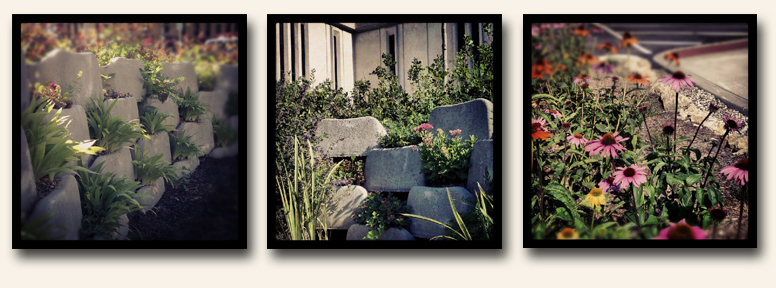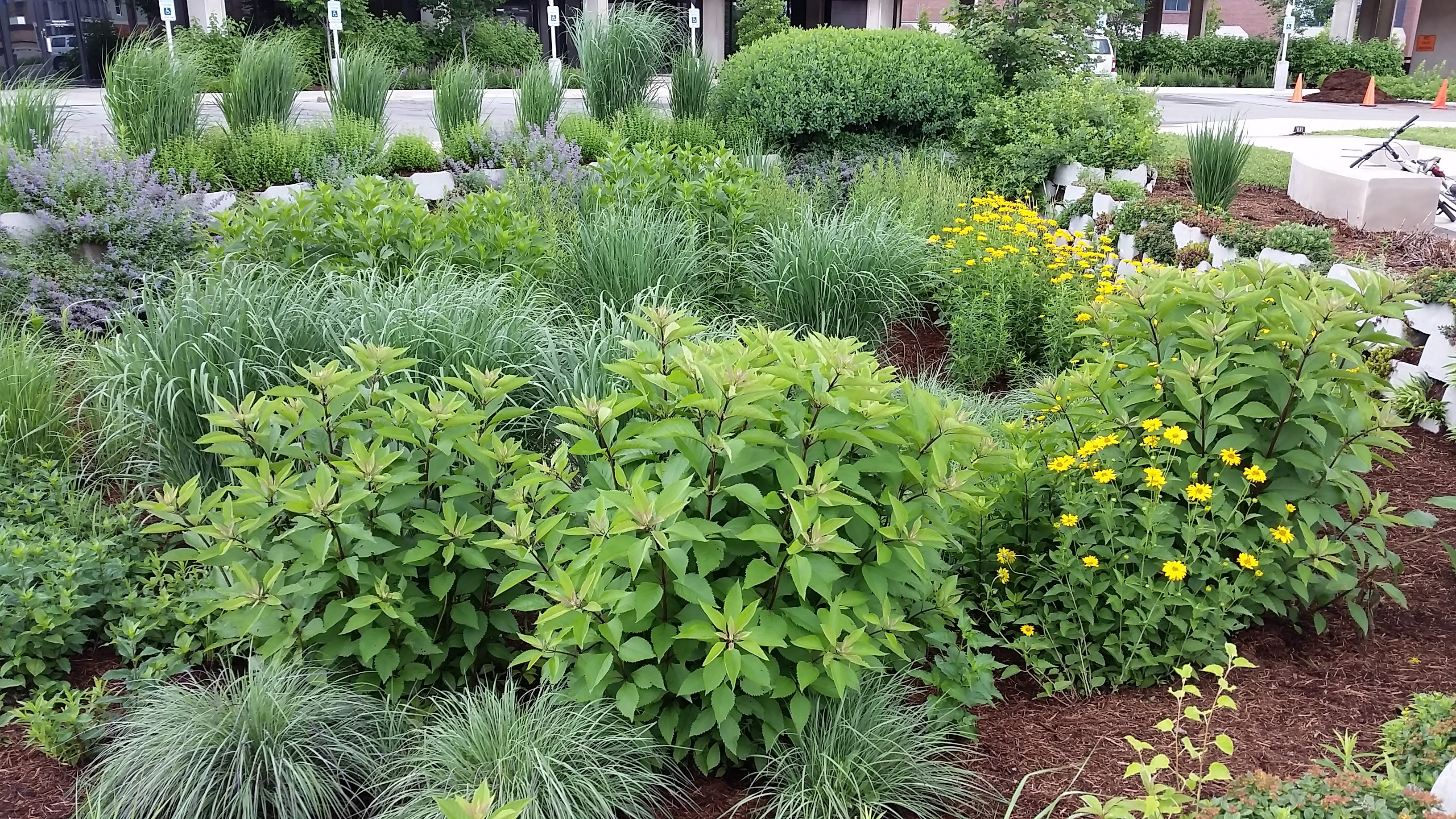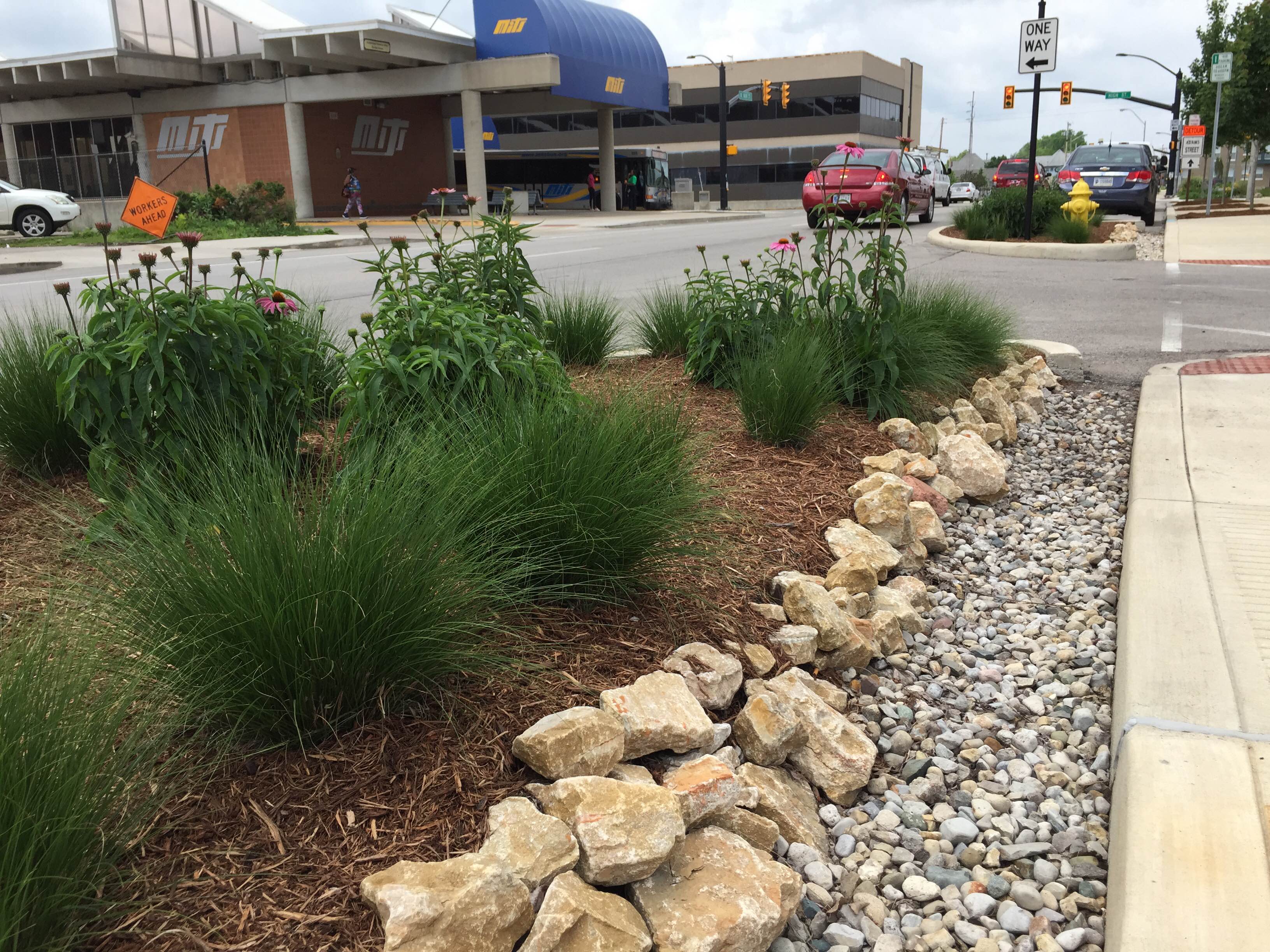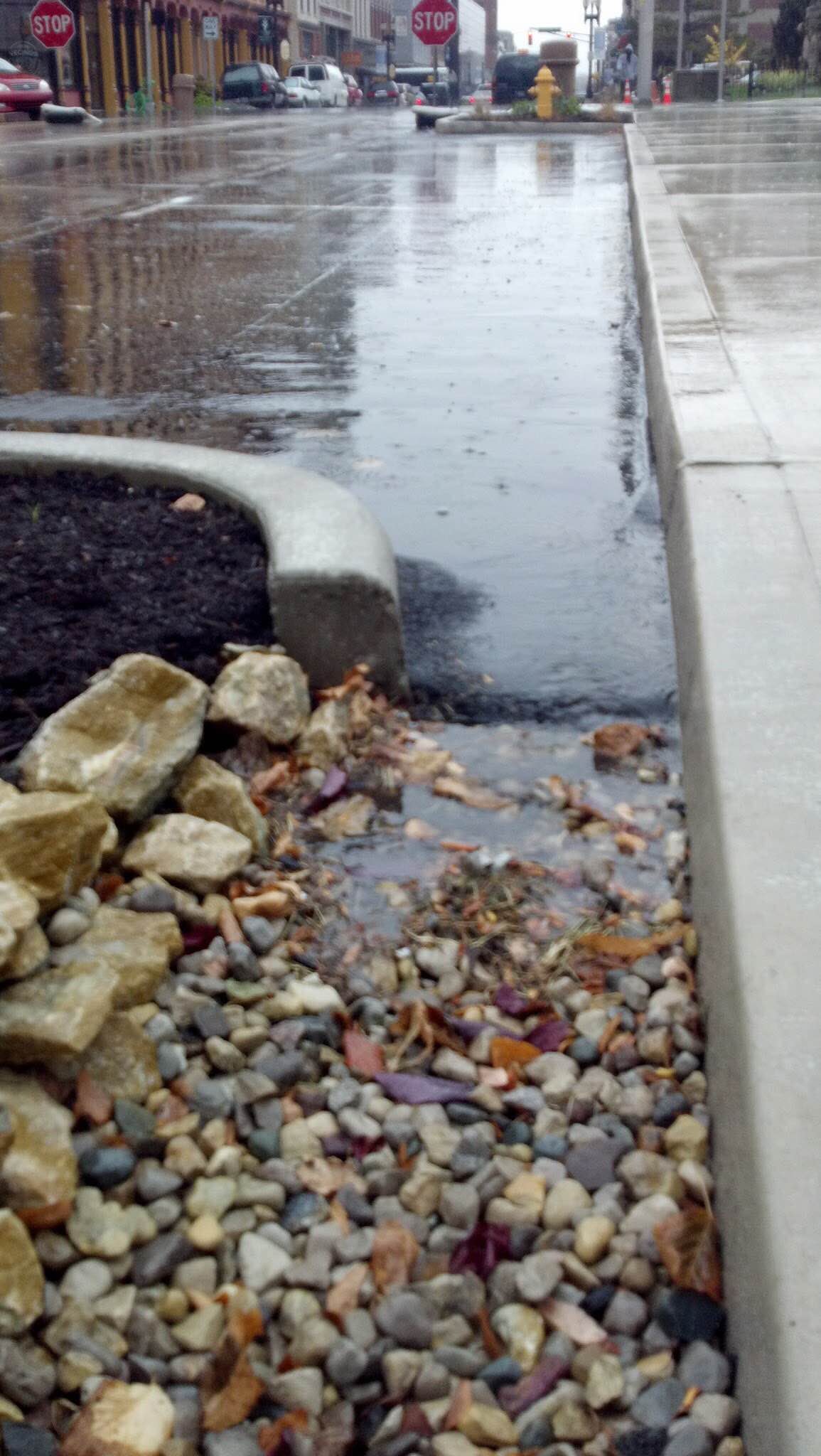Skip over navigation
Start Content
Delaware County, Indiana
Discover Delaware County - an east central Indiana community of opportunity

Interactive Views:
Plaza Green Infrastructure Factsheet
The recently renovated Delaware County Plaza has many Stormwater Best Management Practices (BMP's) in place to manage stormwater runoff. Stormwater Best Management Practices are control measures or actions taken to mitigate changes or prevent the quantity and quality of stormwater runoff from causing water pollution. Stormwater BMP's can be classified as "structural" or "non-structural" and can range from installations to changes in procedures.
Rather than simply letting the stormwater flow into the street and enter the combined storm and sanitary sewers, the new design incorporates specially engineered areas that capture excess runoff, allowing the stormwater to naturally infiltrate in the ground, or be absorbed by the plants, flowers and trees.
Below is a list of Green Infrastructure BMP's that are a part of the new plaza's design. We have also included some before and after pictures, present close-up pictures and a copy of an educational interpretive sign that can be viewed on site.
Bioretention basin/rain garden
- Bioretention basins/rain gardens retain, filter and treat stormwater runoff using a shallow depression of an engineered soil mixture topped with a layer of mulch and native plants tolerant of short-term flooding and periods of drought. Such best management practices will trap and remove suspended solids and filter pollutants through absorption from plants.
- Living walls create biodiversity conservation opportunities, and absorb and filter storm water, which reduces local water body pollution and helps prevent the overwhelming of municipal storm water infrastructure. Living walls also filter air particulates, improving air quality and help to reduce the urban heat island effect (UHI).
- Infiltration strips serve as first flush pollutant filters along the gutter of the streets to catch excess stormwater run-off leaving the drive or flowing through the street gutter. It is important to catch as much as the first flush of stormwater run-off as possible due to a higher concentration of pollutant material being on impervious or hard surfaces.
- Catchment basins are designed to catch sediment and other debris before allowing it to make it to the stormwater infrastructure, drains and bioretention basins.

View from within the large rain garden - the native plants are very happy!

The plants were specifically chosen for beauty, low maintenance and to benefit local wildlife like bees, birds & butterflies.

Curb swale infiltration strip that allows rain water to drain into the ground rather than into storm sewers.




